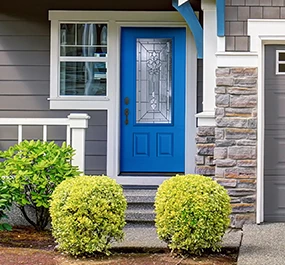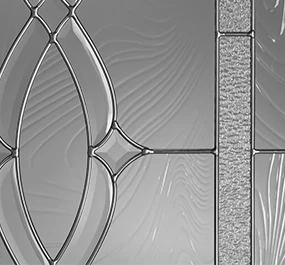Installing a fiberglass door can significantly enhance your home's appearance and functionality. However, like any home improvement project, it comes with challenges. This comprehensive guide aims to help DIY enthusiasts and professionals navigate these challenges effectively.
Essential Tools and Materials for Fiberglass Door Installation
A successful door installation begins with the right tools. Essential items include a tape measure for accurate measurements, a level to ensure the door is perfectly vertical, an electric drill and screwdriver for securing the door, and a hammer for adjustments. Wood shims, installation screws, a framing square, drill bit, putty, high-quality caulk, a hand saw, router or chisel, finish nails, and drywall screws are also needed. Having these tools ready not only facilitates a smoother installation process but also prepares you for any unexpected adjustments.
Preparing the Doorway
Proper preparation of the doorway is crucial. Start by ensuring that the rough opening is square, plumb, and in the same plane. This step is fundamental because any misalignment can lead to functional and aesthetic issues post-installation. Cross-legged walls need to be corrected as they can prevent the door from fitting properly, causing it to not lay flat against the jamb and door stop. This preparation stage might require additional tools and patience, but it's essential for a successful installation.
Aligning and Securing the Door
Carefully align and center the door in the opening, placing it onto the sill pan or caulk beads. It's important to use a level to ensure the hinge jamb is plumb and straight. This step is key to ensuring that your door opens and closes smoothly. Shim the above screws at each hinge location and then tighten the hinge screws for a secure fit. Remember, even minor misalignments can lead to bigger issues, so take your time during this step.
Ensuring a Perfect Seal and Insulation
An effective seal and insulation are vital for energy efficiency and weatherproofing. Check for even weatherstrip contact around the door and adjust the sill for a tight seal. Use a dollar bill to test the tension; the right adjustment will have some tension without tearing the bill. Apply caulking where necessary to seal gaps. This not only prevents air leaks but also enhances the overall thermal efficiency of your home.
Troubleshooting Common Problems
Common problems include doors not fitting in non-square openings and potential cracking of the fiberglass skin. If your door doesn't fit, check if trimming is possible according to the door's specifications. In the case of cracks, use fillers like Bondo for repair. Mimic the door’s graining for a seamless look post-repair. This approach ensures both the functional integrity and aesthetic appearance of your door are maintained.
Handling the Weight of the Door
Fiberglass doors are often heavier than traditional wooden doors. It’s important to have assistance to safely manage the weight. Proper lifting and positioning are key. The right approach here prevents damage to the door and avoids potential injuries during installation.
Installing Hardware on Fiberglass Doors
Carefully install locks, handles, or door accessories, ensuring proper alignment and drilling. Incorrect installation can put stress on the door and affect its functionality. Making necessary adjustments for smooth operation is crucial in this step to ensure the hardware not only looks good but also functions well.
Adjusting Doors to Prevent Sticking or Gaps
If your door sticks or has gaps, adjust the hinges and the strike plate. Realign or replace weather stripping as needed for a smooth operation and a snug fit. Such adjustments can greatly improve the usability and longevity of your door.
Installing in Older Homes
In older homes, door frames might not be perfectly square, requiring extra shimming and trimming. This challenge demands a high level of precision and care. Ensure thorough alignment checks to fit the new door properly into the existing structure.
Post-Installation Maintenance
To maintain your fiberglass door, clean it regularly with a damp cloth. In harsh weather conditions or direct sunlight, additional protection like a coat of varnish or paint might be necessary. This will help maintain the appearance of your door and prevent issues such as fading or wear due to environmental exposure.
A New Fiberglass Door with Plastpro
Installing a fiberglass door can be a complex yet rewarding DIY project. By following these steps and being prepared to troubleshoot common issues, homeowners and professionals alike can ensure a successful installation. The key lies in careful planning, precise execution, and a thorough understanding of the door's mechanics and material.
With this guide, your new fiberglass door installation should not only enhance the curb appeal of your home but also offer improved functionality and efficiency.
Ready to get started on finding your next perfect door? Explore Plastpro’s catalog and find a dealer near you!



